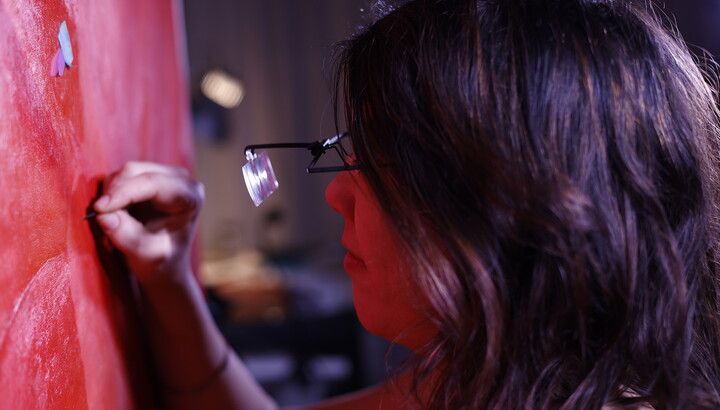The Carter Blog
Carter ARTicles
A short history of zines
Dec 13, 2023
Artist zines have become an important part of the Carter’s collection as they are often the earliest record of an artist’s published work. Today, zines are more prevalent than ever and cover a wide range of topics. Artists have co-opted this format to publish their work before gaining notice for their work, create an exhibition catalog, or express their creativity through another format. Since the format is mainly self-published, artists can get quite creative with bindings, sizes, decorations, topics, and content. New additions to the Library’s growing collection of zines include Ed Ruscha’s Couplings, Abandoned Sleep by Ari Marcopoulos, and DUOS by Meryl Meisler. But how did this format emerge?
Zines (pronounced “ZEENS”) credit their origin to the 1930s and 40s with the creation of a self-published, short magazine by science-fiction fans to discuss the content that they loved. These fan-made zines became widely popular in the 60s and 70s, greatly increasing visibility of the zine format. With the invention of the copy machine and copy shops becoming widely available in the 1970s, the production and growth of the format expanded, and the style of zines was revamped into a more do-it-yourself style. Art and design zines trace their origins to the radical magazines created in the early 20th century that focused on Dada and surrealism, described as avant-garde zines, also known as “little magazines,” that were revolutionary in the art world. The Carter’s library collection includes a growing number of artists’ books in which the artist uses the book format to present an idea as opposed to a form of artwork. Such limited-edition artist books exploded in the 1960s as an affordable option for artists to showcase their work. These zines are often independently published and can feature illustration, graphic design, typography (often hand drawn), printmaking, and photography. Many zines in this genre are created by hand, and the materials used, including bindings and paper, are creative choices made by the artist. Similarly, zines have been used by photographers to produce more affordable versions of photobooks. The term “photobook” has been used to describe the publication of a photographer’s series of photographs. The Carter Library has very strong photobook holdings that, like artists’ books, use creative bindings, papers, and design choices. Zines from well-known photographers such as Ari Marcopoulos, Flo Fox, and Donna Ferrato, as well as zines from lesser-known and local photographers, make up the Library’s growing collection.
Some of the titles in our collection that delve into the zine format include A Zine Binding Guide: 10 Structures for Simple Books and Zines by Lewis Bush; Make a Zine!: Start Your Own Underground Publishing Revolution by Joe Biel; and Whatcha Mean, What’s a Zine? The Art of Making Zines and Mini-Comics by Mark Todd and Esther Pearl Watson. Come explore the Library’s collection of zines during our public hours, and be on the lookout for future zine-making events.
Want to make your own zine?
Zines can be made out of any material, so get creative and find things around your house to use! Add artwork, typing, collage, stamps, stickers, etc. Examples of zines from our past zine-making events are included for inspiration. Visit this website for templates and tips on zine-making and put your ideas on the page!





